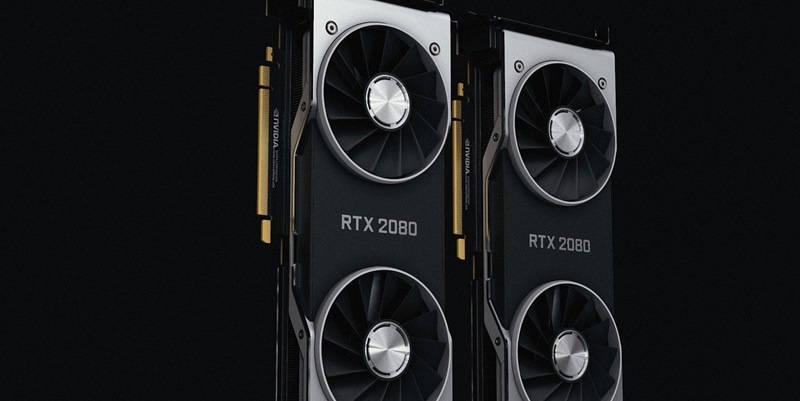The convergence of hardware and software is essential in high-performance computing. For users with AMD GPUs, a major development has been made with the advent of ZLUDA. This groundbreaking, open-source tool allows the NVIDIA CUDA libraries, previously exclusive to NVIDIA GPUs, to be utilized on AMD graphics hardware. This is a significant shift in the GPU computing sphere, as it breaks down barriers of compatibility and opens up new possibilities for AMD GPU owners. The introduction of ZLUDA essentially democratizes access to CUDA’s capabilities, making it possible for software originally designed for NVIDIA’s ecosystem to run on a broader range of hardware. This innovative bridge between different GPU platforms has the potential to enhance computational efficiency and flexibility, particularly beneficial to those in fields reliant on CUDA-accelerated applications.
ZLUDA: A Catalyst for Compatibility
The Journey of ZLUDA
ZLUDA, initially targeting Intel GPUs, aimed to bridge the gap for CUDA applications to run on alternative hardware. The project encountered slow advancement due to inherent software development complexities. However, the narrative shifted when AMD showed interest in adapting ZLUDA for their Radeon line. This collaboration led to the open-sourcing of ZLUDA, which was a game-changer. The team, led by Andrzej Janik, received a significant boost from AMD’s resources, contributing to enhanced testing, development, and wider applicability. AMD’s partnership underscored the significance of ZLUDA in expanding CUDA’s reach, potentially shifting how developers approached hardware-agnostic programming. The open-source model facilitated community involvement, improved debugging, and the evolution of the software. Integrated with it, Radeon users were suddenly poised to utilize an array of applications previously limited to NVIDIA’s proprietary ecosystem. This strategic move not only diversified the playing field but also fostered a more competitive environment in the realm of GPU computing.
Phoronix’s Comprehensive Evaluation
Phoronix, a prominent tech platform, has played a pivotal role in evaluating ZLUDA’s integration with AMD hardware. Their rigorous benchmarks demonstrate that running CUDA-based applications on non-NVIDIA GPUs is now a reality, with performance levels that are remarkably streamlined. Their focused assessment utilizing Blender 4.0 for render tasks has been particularly revealing.
The comparative studies on rendering have placed AMD GPUs in the limelight, showcasing their ability to hold their ground against NVIDIA’s offerings. Such progress marks a significant milestone in the realm of GPU computing, where traditionally, CUDA’s ecosystem was highly NVIDIA-centric. This advancement opens up new possibilities for users with AMD GPUs, who can now tap into the CUDA application space without significant compromise in performance.
AMD’s success in this sphere is a testament to the strides being made towards universal GPU utility, breaking down barriers that once dictated the choice of hardware based on software compatibility. The implications of Phoronix’s findings are considerable, potentially reshaping the GPU market dynamics by providing users with greater flexibility and choice.
The Impact of ZLUDA on AI and Beyond
The integration of ZLUDA has pivotal consequences, especially as it enables the use of AMD GPUs for applications that were traditionally CUDA-dependent, like those in artificial intelligence (AI). With this development, AMD hardware may now compete in domains where NVIDIA’s CUDA previously reigned supreme, offering fresh prospects to AMD’s stakeholders. This optimism isn’t merely speculative—it’s supported by solid performance outcomes, particularly in AI benchmarks where CUDA’s role is critical. In essence, ZLUDA acts as a bridge between ROCm, AMD’s open software platform, and NVIDIA’s proprietary CUDA, thus potentially diversifying and enriching the AI landscape. Users of AMD GPUs now have more flexibility and choice when it comes to AI development and research, which could lead to increased innovation and competition in the field. This move may mark a turning point for AMD, placing them in a more competitive position in the AI market and technology industry as a whole.
Harnessing Upscaling Capabilities
ZLUDA’s introduction into the GPU landscape is a notable step forward, particularly in how it bridges the capability gap between Radeon and NVIDIA GPUs. Historically, NVIDIA has championed upscaling techniques within its proprietary CUDA platform. ZLUDA extends these advancements to Radeon hardware, enabling AMD to access features previously exclusive to NVIDIA tech. This shift is significant, breaking down proprietary walls that have traditionally hindered widespread innovation. As ZLUDA matures, its potential to revolutionize GPU computing is immense, offering developers and users alike new opportunities for exploration and progress. The cross-pollination of technology fostered by ZLUDA may well be a pivotal moment, where the democratization of GPU resources sparks a surge in computational evolution and application development.

